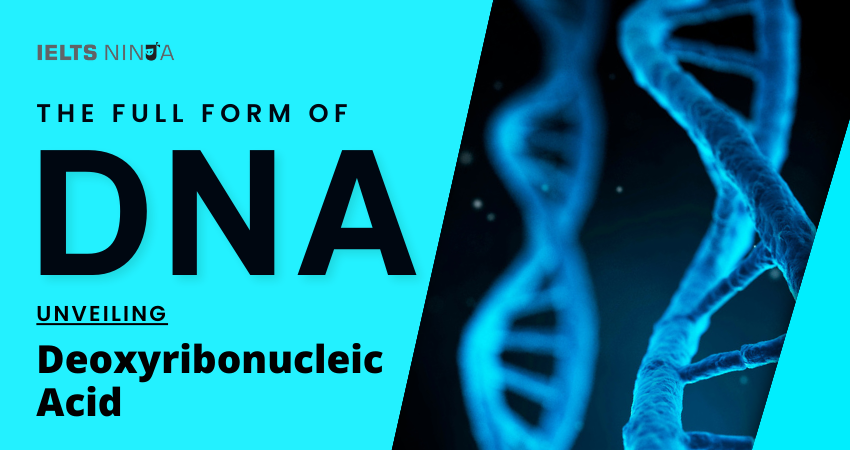In the realm of biology and genetics, “DNA” is an iconic abbreviation that holds the key to understanding the fundamental building blocks of life. The full form of DNA, which stands for Deoxyribonucleic Acid, is a molecule that carries the genetic instructions necessary for the growth, development, functioning, and reproduction of all known living organisms. In this comprehensive guide, we will explore the details of DNA, its structure, significance, and its role as the blueprint of life.
What is DNA?
“Deoxyribonucleic Acid”, or DNA, is a long, double-stranded molecule that contains the genetic code for all living organisms. It is often referred to as the “molecule of life” because of its central role in encoding and transmitting genetic information from one generation to the next. DNA is found in the nuclei of cells and also in some cellular structures known as organelles, such as mitochondria.
Structure of DNA
The structure of DNA is a double helix, which resembles a twisted ladder. Its key components include:
Nucleotides:
DNA is composed of smaller units called nucleotides, each consisting of a sugar molecule (deoxyribose), a phosphate group, and one of four nitrogenous bases: adenine (A), cytosine (C), guanine (G), or thymine (T).
Base Pairs:
The nitrogenous bases on one strand of DNA pair with complementary bases on the other strand. Adenine pairs with thymine, and cytosine pairs with guanine, creating the “rungs” of the DNA ladder.
Double Helix:
The two strands of DNA wind around each other in a helical fashion, with the sugar-phosphate backbone forming the sides of the ladder and the base pairs forming the rungs.
Also Read: Best online IELTS coaching & training academy
Significance of DNA
DNA plays several crucial roles in biology and genetics:
Genetic Information:
DNA contains the genetic instructions that determine an organism’s traits, such as eye color, height, and susceptibility to certain diseases. It serves as a complete library of an organism’s genetic information.
Replication:
Before a cell divides, DNA must replicate to ensure that each new cell receives a complete set of genetic information. This process is essential for growth and reproduction.
Protein Synthesis:
DNA provides the instructions for the synthesis of proteins, which are the workhorses of the cell. These proteins carry out various functions in the body, from enzyme activity to structural support.
Evolution:
DNA is central to the process of evolution. Mutations and changes in DNA sequences can give rise to genetic diversity, driving the evolutionary process over time.
Forensic Science:
DNA analysis is widely used in forensic science to identify individuals, solve crimes, and establish familial relationships through DNA profiling.
Discovery of DNA
The discovery of DNA’s structure is credited to James Watson and Francis Crick, who, in 1953, proposed the double helix model of DNA. Their work was based on the research of Rosalind Franklin, Maurice Wilkins, and others who had previously made significant contributions to understanding DNA’s structure.
DNA Replication
DNA replication is a highly precise process in which the two strands of DNA separate, and each strand serves as a template for the synthesis of a new complementary strand. This ensures that the genetic information is faithfully passed from one generation of cells to the next during cell division.
DNA Technologies
Advances in DNA technologies, such as polymerase chain reaction (PCR) and DNA sequencing, have revolutionized fields like genetics, medicine, and forensics. These technologies allow for the manipulation and analysis of DNA on a molecular level, opening up new possibilities in disease diagnosis, gene therapy, and genetic research.
Conclusion
Deoxyribonucleic Acid (DNA) is a remarkable molecule that serves as the foundation of life as we know it. Its elegant double helix structure encodes the instructions for the development, function, and diversity of all living organisms. The study and understanding of DNA continue to revolutionize fields such as genetics, medicine, and biotechnology, unlocking the secrets of life and offering new insights into the complexity of the natural world.








